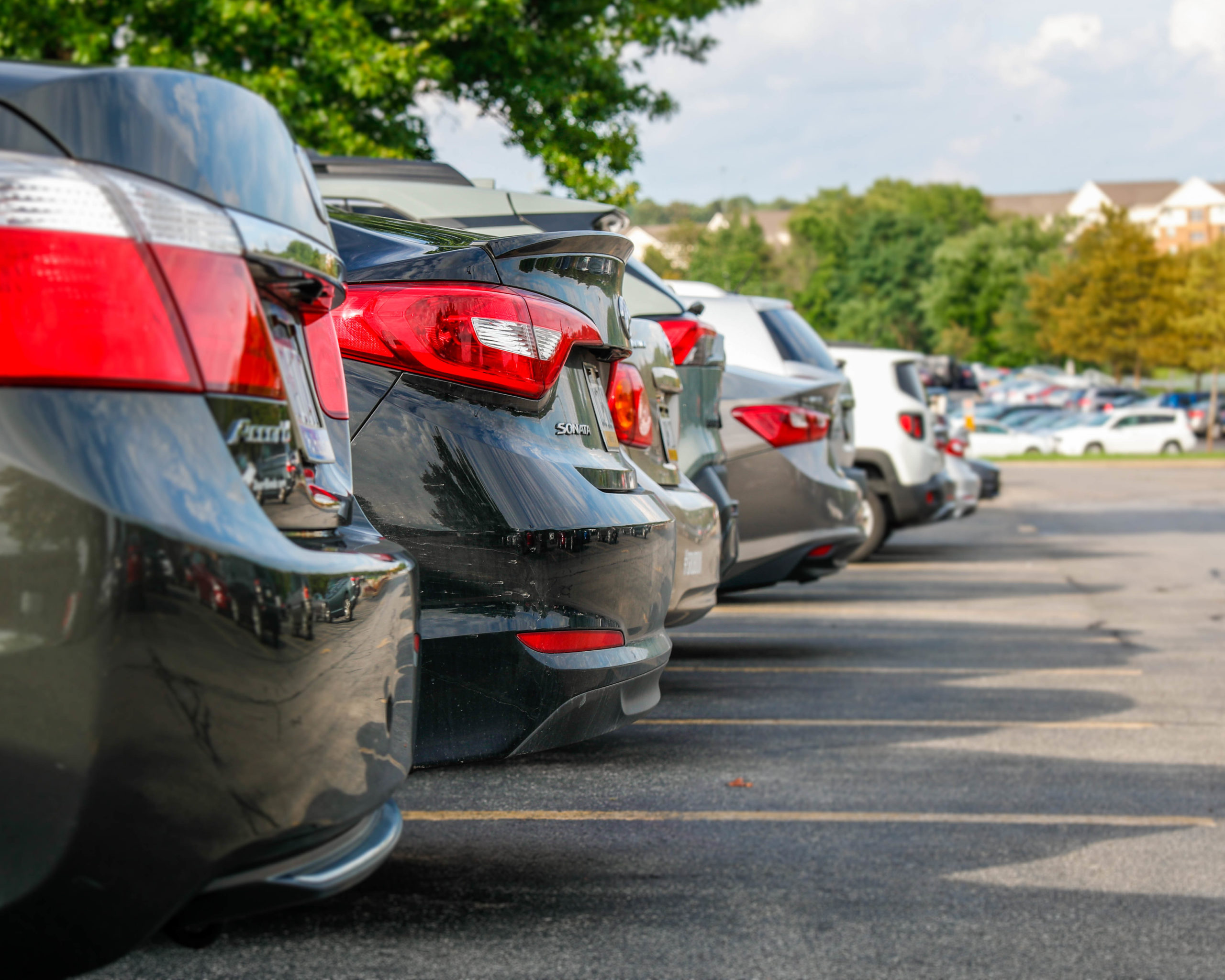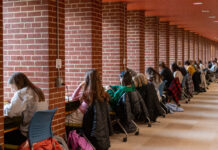As the fall semester unfolds, there is excitement in the air as students look forward to getting “back to normal” as much as possible, but the parking lots on campus are representing the chaos that is welcoming back such large numbers.
Between commuters, residents and faculty and staff, the parking lots are filled to the brim by 8 a.m. Residents and commuters are frustrated by the lack of accessible parking available.
The campus offers almost 950 parking spots for staff, about 880 for commuter, roughly 1,000 for resident, around 800 open parking spots with permit available to residents, commuters and staff and 400 for staff and commuter in the West Lake Parking Lot, according to University Police Chief Kevin Sharkey.
The East Lake Parking Lot is marked as open parking with a permit, located near the Jack Critchfield Park. With a total of 400 parking spots, 95 are restricted from overnight parking, with 12 being handicapped parking. This means student can’t park in this lot after hours from 5 p.m. to 7:30 a.m.
Although parking spots on campus total over 4,000, students feel there still isn’t enough spots. As of Sept. 1, the university sold over 3,000 commuter permits, roughly 1,400 resident permits and 166 staff permits for the 2021-2022 academic year. There were over 5,000 permits sold this year, with about 4,000 spots available.
Taylor Godleski, a sophomore resident majoring in marketing, has expressed her frustrations with lack of parking and the ticketing system at SRU.
“You can either go the stadium, and over half of those spots are filled up, or you basically just have to wait until someone leaves to pull into a spot,” Godleski said. “[After hours], there’s tons of commuter spots that are always open. If you park there, you will get ticketed.”
Residents and commuters pay $25 per academic year for parking e-permits. Residents feel frustrated because they live here and are unable to find parking close to where they live.
“I don’t really think there’s a need to have a giant chunk of the parking that could be right there for people who lives [in the dorms],” Godleski said. “I just wish since I’m living in the dorm that when I bought a parking pass that I was guaranteed a spot by the dorms, versus having to parking by the baseball fields or the stadium.”
Godleski parked in a commuter lot after hours, resulting in a citation. She said this was frustrating because the lot was located right behind the resident parking.
“It was right there by the president parking,” Godleski said. “I don’t know who’s going to be a commuter that’s going to park by the dorms.”
From Aug. 1, 2019 to Sept. 1, 2021, there were about 5,300 parking violations that totaled to about $23,325 in citations.
Paul Novak, executive director of planning and environmental health and safety, has been active in plans regarding restructuring parking.
“We did a bit to address some past parking issues,” Novak said. “There were two, and we call them affectionally gravel lots that were installed. These lots are having work done to them to have those paved. As far as additional lots or additional spaces, I’m not aware of [plans for more], at least not to the Office of Design and Construction.”
Novak recognized that parking has been a challenge at the university, and SRU wants to try and make more parking available. If students have concerns, Novak encouraged students to come to his office, email him or contact the Parking Services Office.
Nazmul Rony, associate professor in the strategic communication and media department (SC&M) experienced issues at the start of the semester, but the problems have been resolved. His first-year students offered him their perspectives.
“In the first week, I had issues finding parking. I think that many students don’t know where to park,” Rony said. “I was talking to some of my students in my FYRST seminar class, who are freshman, they told me that some of them got tickets and they realized that they couldn’t park in a certain spot.”
Christine Pease-Hernandez, another professor in SC&M, shared her experience with parking and gave advice to students.
“I plan [parking] so I get here between classes, but I’m very strategic about it,” Pease-Hernandez said. “[For students], I think it’s more of a walking issue. People don’t want to walk. There’s the happy bus, people need to take the happy bus. . . There are resources and I would encourage students to take advantage of those resources.”








